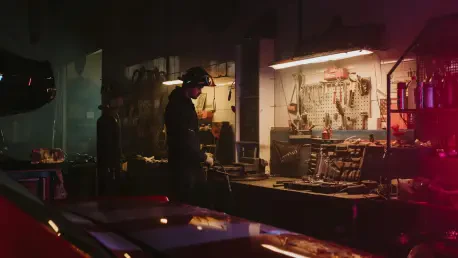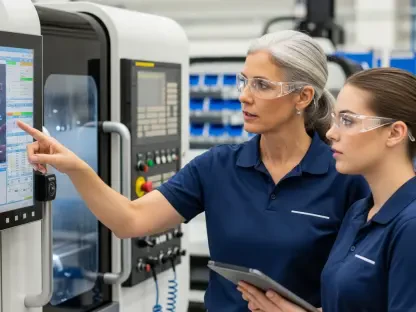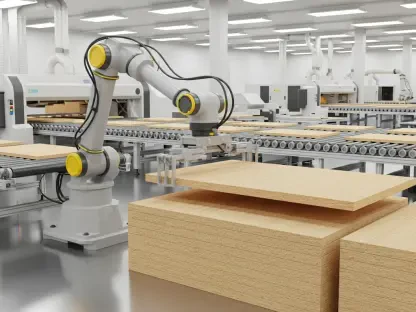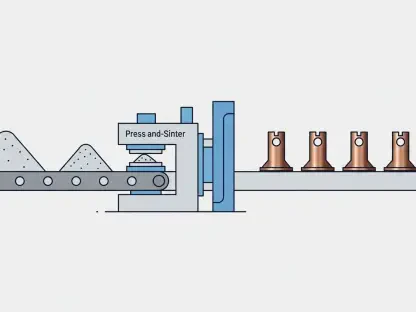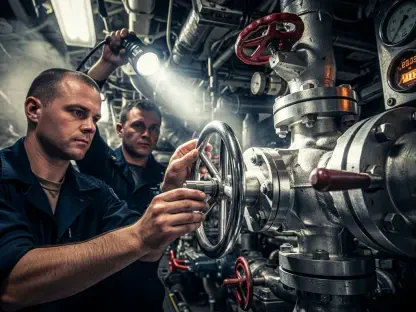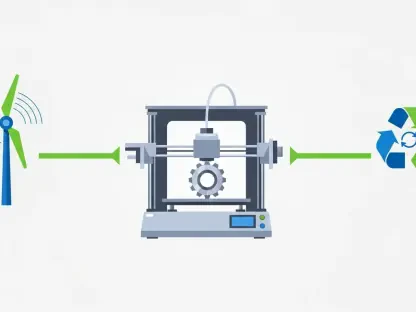The automotive industry stands at a critical juncture where efficiency, quality, and sustainability are not just goals but imperatives for survival in a competitive global market, and with production demands soaring and environmental regulations tightening, manufacturers face immense pressure to innovate. Advanced paint shop technology has emerged as a game-changer, offering solutions that streamline processes while meeting stringent standards. This review delves into the transformative potential of these technologies, examining how they are reshaping automotive manufacturing with cutting-edge systems and designs.
Introduction to Paint Shop Technology
Paint shop technology has become a cornerstone of modern automotive production, integrating sophisticated machinery and processes to ensure high-quality finishes on vehicles. At its core, this technology encompasses systems for pretreatment, coating, and finishing, all designed to enhance durability and aesthetics while optimizing operational efficiency. Its emergence aligns with the industry’s shift toward automation and sustainability, addressing the need for faster production cycles and reduced environmental impact.
The significance of these advancements extends beyond individual plants to the broader industrial landscape. By enabling manufacturers to meet rigorous quality standards and comply with eco-friendly regulations, paint shop innovations are setting new benchmarks. They play a pivotal role in reducing waste and energy consumption, thus supporting global efforts to create greener manufacturing practices.
Core Features and Innovations
RoDip E System for Pretreatment and Electrocoating
Among the standout innovations in paint shop technology is the RoDip E system, a sophisticated solution for pretreatment and electrocoating. This system employs programmable trolleys that provide independent horizontal and rotational control for each vehicle body, ensuring an even and high-quality coating. Such precision minimizes defects and enhances the durability of the finish, a critical factor in vehicle longevity.
Beyond quality, the RoDip E system offers substantial operational benefits. It significantly cuts down on energy use and operational costs by optimizing the coating process, reducing the need for rework or excess materials. This efficiency makes it a preferred choice for manufacturers aiming to balance cost-effectiveness with superior output.
Integrated Spray Booth Design
Another remarkable advancement is the integrated spray booth design, which combines primer and clear-coat application into a single unit. This innovation slashes investment costs by eliminating the need for separate booths, thereby saving valuable floor space in manufacturing facilities. The compact setup also simplifies maintenance and reduces downtime during production.
The impact on production speed is equally notable. By streamlining the painting process into one cohesive stage, manufacturers can achieve faster throughput without compromising on finish quality. This design exemplifies how thoughtful engineering can address multiple challenges—space, cost, and efficiency—in a single solution.
Recent Developments and Industry Trends
The landscape of paint shop technology is evolving rapidly, driven by automation and the integration of painting robots. These robots enhance precision and consistency, reducing human error while speeding up repetitive tasks. Their adoption reflects a broader trend toward smart manufacturing, where data-driven systems optimize every stage of production.
Sustainability remains a key focus, with innovations targeting reduced emissions and eco-friendly coatings. Manufacturers are increasingly prioritizing water-based paints and energy-efficient systems to align with global environmental goals. This shift not only addresses regulatory demands but also appeals to a consumer base that values green practices.
Additionally, the industry is witnessing a growing need for scalability and flexibility in paint shop setups. As market demands fluctuate, facilities must adapt quickly to varying production volumes. Modular designs and adaptable technologies are becoming essential, ensuring that plants can scale operations without extensive overhauls.
Real-World Applications and Case Studies
In practical settings, advanced paint shop technology demonstrates its value through impactful implementations, such as at the TCVH plant in Vietnam for Škoda vehicle production. This facility, designed to produce up to 120,000 vehicles annually, showcases how cutting-edge systems can support high-capacity manufacturing. The plant’s initial phase operates at 13 jobs per hour, with plans to increase to 20 jobs per hour, highlighting scalability in action.
Logistical efficiency further enhances the plant’s effectiveness. Located near a key port, it benefits from streamlined imports of vehicle kits, ensuring a steady supply chain. This strategic positioning reduces delays and costs, illustrating how technology and location can work in tandem to boost productivity.
The deployment of advanced systems like integrated spray booths and electrocoating technology at this plant ensures consistent quality across models like the Kushaq and Slavia. Such real-world examples underscore the tangible benefits of these innovations, from improved output to operational reliability.
Challenges and Limitations
Despite its promise, advanced paint shop technology faces significant hurdles, including global supply chain disruptions. Delays in sourcing critical components can stall projects, impacting timelines and budgets. These issues are compounded by material shortages, which challenge manufacturers to maintain steady production levels.
Environmental factors also pose obstacles, particularly during project execution in regions prone to adverse weather. Such conditions can disrupt construction and installation phases, requiring robust contingency planning. Addressing these challenges demands adaptive strategies and resilient project management to keep initiatives on track.
Efforts to mitigate these limitations are underway, with a focus on improved collaboration models between suppliers and manufacturers. By fostering stronger partnerships and leveraging local resources, the industry aims to reduce dependency on volatile global networks. These steps are crucial for ensuring the smooth rollout of advanced technologies.
Future Outlook and Potential
Looking ahead, paint shop technology is poised for groundbreaking advancements, particularly in full automation. The integration of artificial intelligence and machine learning could further refine processes, enabling predictive maintenance and real-time optimization. Such developments promise to elevate efficiency to unprecedented levels.
Eco-friendly coatings are another area of potential, with research focusing on sustainable materials that maintain high performance. These innovations could redefine industry standards, reducing environmental footprints while meeting consumer expectations for quality. The push toward greener solutions will likely shape manufacturing norms in the coming years.
Moreover, the role of smart manufacturing integration cannot be overstated. As regions like Vietnam emerge as global hubs, the adoption of connected systems will drive competitiveness. From 2025 to 2027, expect significant strides in digital infrastructure, positioning paint shop technology at the forefront of industrial transformation.
Conclusion and Key Takeaways
Reflecting on the journey of advanced paint shop technology, its transformative impact on automotive manufacturing becomes evident through enhanced quality and efficiency. The innovations achieved set a high standard for production processes, proving their worth in real-world applications. Challenges were navigated with resilience, showcasing the industry’s capacity to adapt under pressure.
Moving forward, stakeholders should prioritize investment in automation and sustainable materials to sustain this momentum. Collaborative efforts between global firms and local players must intensify to address supply chain vulnerabilities. Embracing digital tools will also be key to unlocking the next wave of efficiency gains, ensuring that this technology continues to drive industrial progress.
